First look at Bird Paradise: 7 things to see and know
Sign up now: Get ST's newsletters delivered to your inbox
SUBSCRIBEhttpsstrsgytsubBirdParadisewillopentothepubliconMayHerearesevenkeyareastocheckoutatthe
Follow topic:
SINGAPORE – The 17ha Bird Paradise,
More special guests will visit the park before May 8, including Friends of Wildlife members, school educators, groups of beneficiaries and migrant workers who helped to build the park.
Here are seven things to see in the new park and know before your visit.
1. 8 walk-through aviaries

Lory Loft at Bird Paradise resembles the monsoon forest of Irian Jaya and houses more than 10 species of gregarious lories.
ST PHOTO: LIM YAOHUI
Each walk-through aviary reflects a different biome of the world.
Hong Leong Foundation Crimson Wetlands mimics the landscape of South America’s flooded savannahs and has about 40 species.

The waterfall in Hong Leong Foundation Crimson Wetlands.
ST PHOTO: LIM YAOHUI
Here, scarlet ibises and roseate spoonbills glide over the marshy wetlands, while a variety of macaws feed off a clay lick wall, similar to those where birds gather along Amazonian riverbanks. Macaws ingest clay to aid digestion and neutralise toxins from seeds they eat.
A large waterfall pays tribute to Jurong Bird Park’s Waterfall Aviary.
Heart of Africa, the park’s largest walk-through aviary at 1.55ha, draws inspiration from the forested valleys of continental Africa.
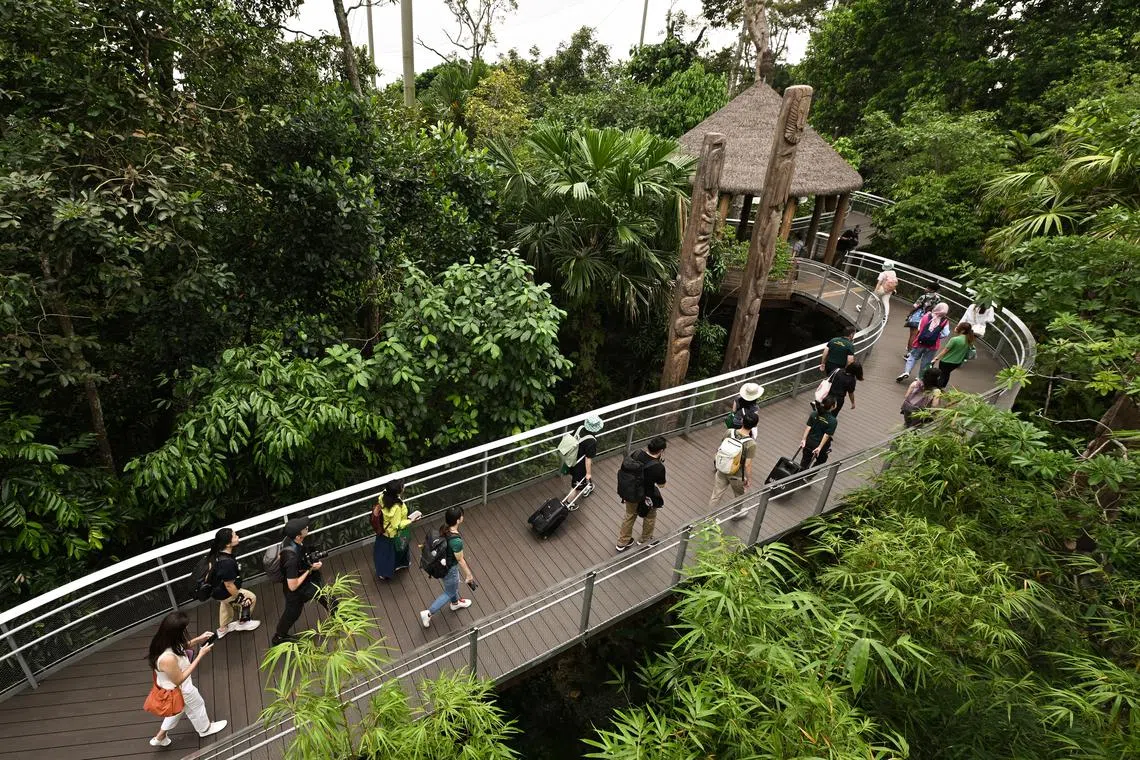
Heart of Africa, the park’s largest walk-through aviary at 1.55ha, draws inspiration from the forested valleys of continental Africa.
ST PHOTO: LIM YAOHUI
At a bee-eater’s cliff, birds of the species may be seen diving and swooping to catch insects mid-air. Up to 80 species of birds are housed there, including eight different species of turacos.
Kuok Group Wings of Asia contains rice terraces, where Australian pelicans, black-faced spoonbills and milky storks wade in shallow waters. Visitors can watch birds feeding or participate in interactive sessions in this aviary.
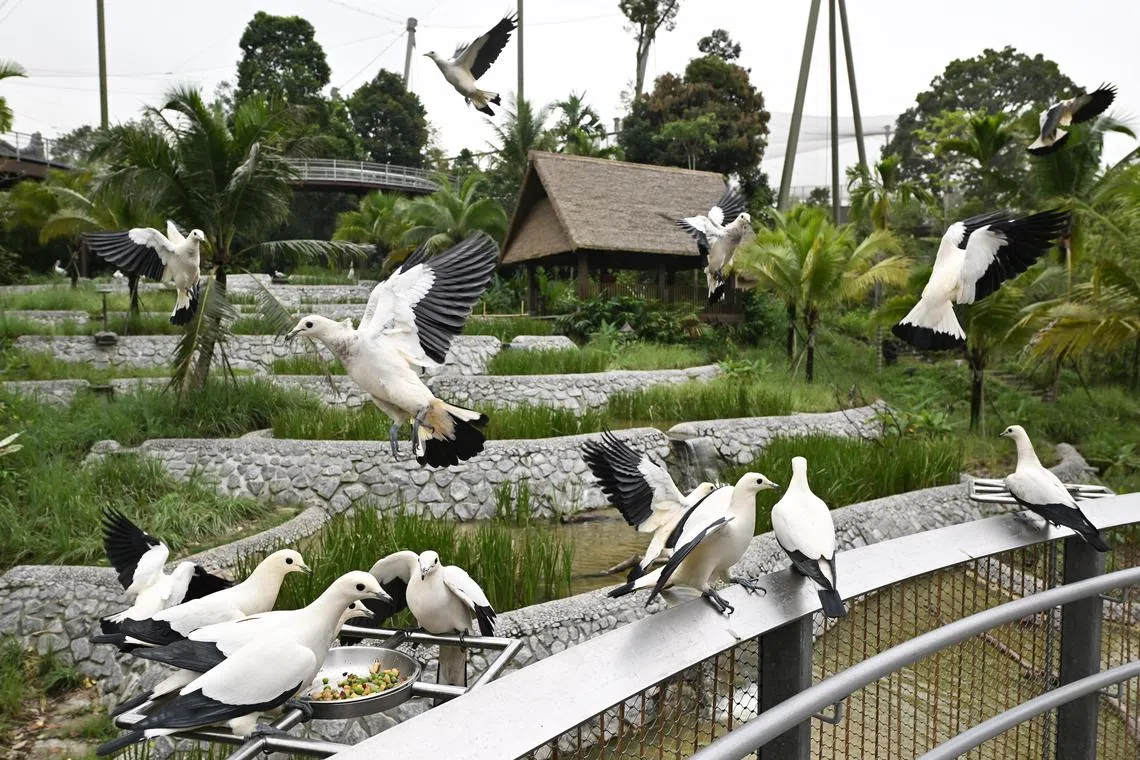
Pied imperial pigeons in Kuok Group Wings of Asia.
ST PHOTO: LIM YAOHUI
Amazonian Jewels is inspired by South American rainforests. It has ficus trees, terrestrial and epiphytic bromeliads and unique bird species such as the Amazonian motmot and chestnut-eared aracari.
Songs of the Forest showcases Asian songbirds such as the Bali myna, straw-headed bulbul and Asian fairy bluebirds. Inspired by the riverine forests of South-east Asia, the aviary has large overhanging leaves and gentle, glistening streams.
Lory Loft resembles the monsoon forest of Irian Jaya and houses more than 10 species of gregarious lories, each of which has distinctive vocalisations.
The aviary has suspension bridges themed after ethnic treehouses in Papua. From these bridges, visitors can offer birds a nectar cup, enticing them to come up close and perch on their wrists and shoulders.
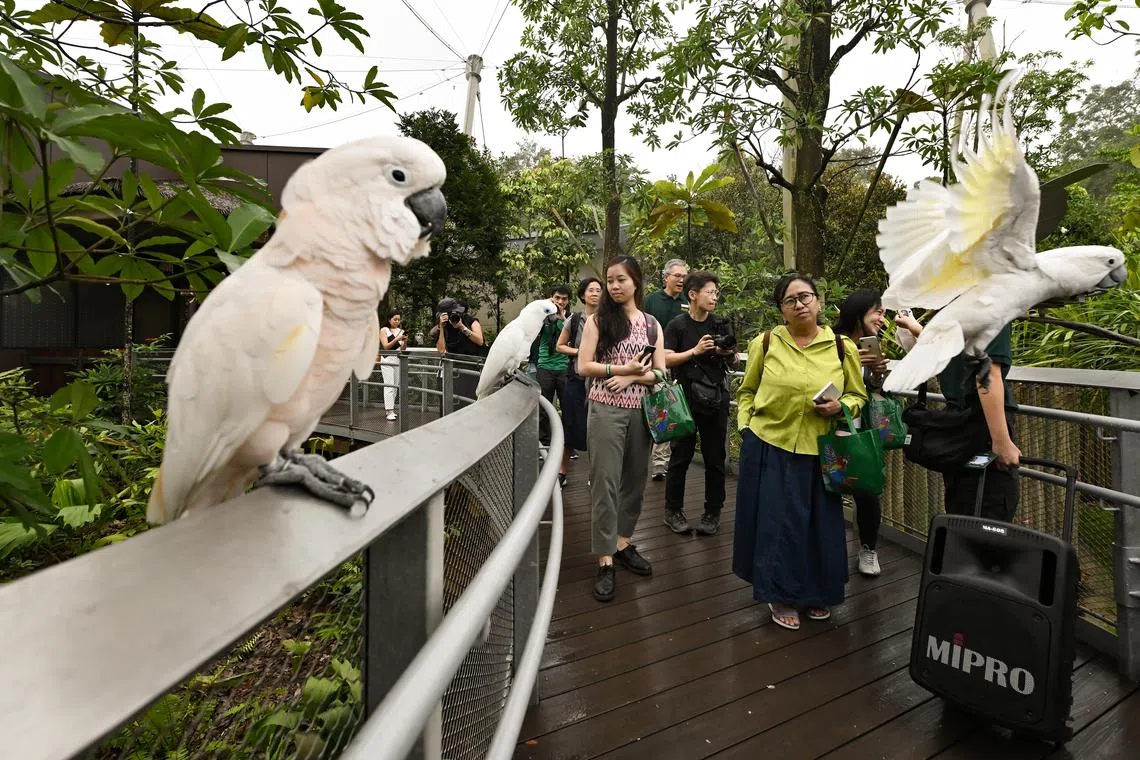
White cockatoos in Mysterious Papua.
ST PHOTO: LIM YAOHUI
Mysterious Papua mimics the landscape of the New Guinean coastal rainforest, and will be home to elusive birds of paradise. A longhouse-style bird hide offers visitors an opportunity to observe up close Papuan birds such as the southern cassowary, North Papuan king parrot and palm cockatoo. The aviary also has the world’s largest population of blue-eyed cockatoos under human care.
Australian Outback will have a dry eucalypt forest habitat for lorikeets and endangered cockatoos.
2. Multi-storey penguin exhibit
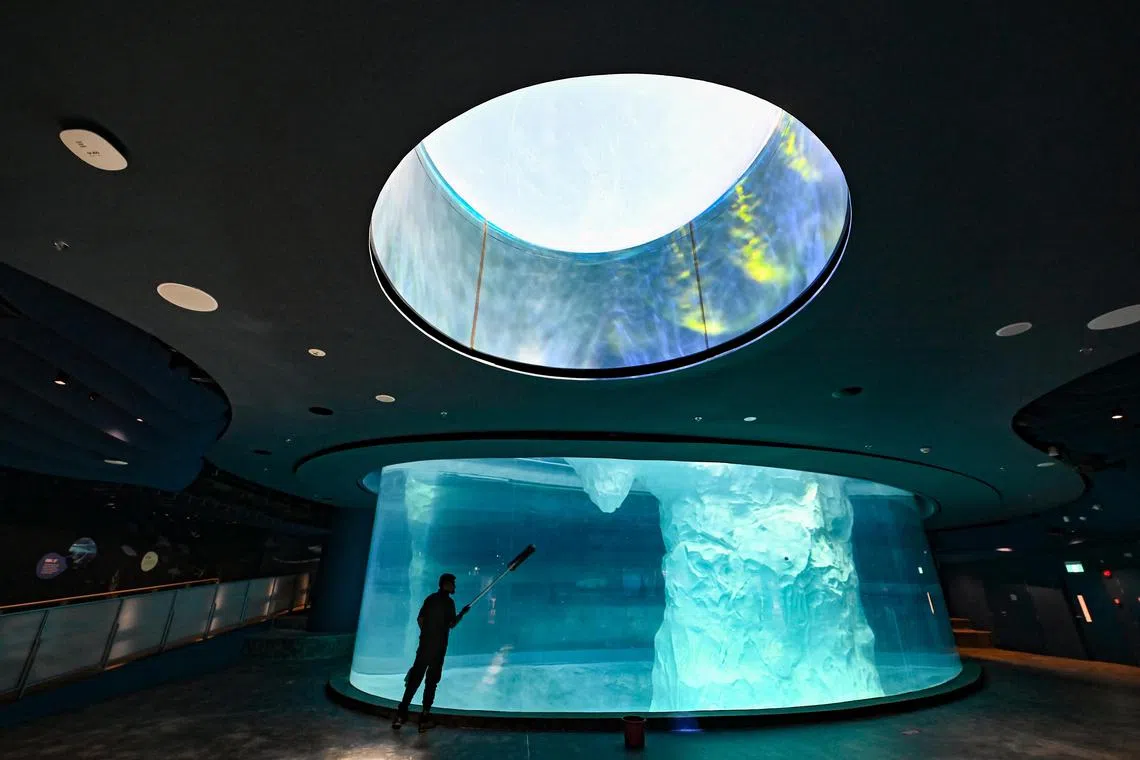
The Ocean Network Express Penguin Cove in Bird Paradise.
ST PHOTO: LIM YAOHUI
Ocean Network Express Penguin Cove is home to four species of penguins – gentoos, kings, humboldts and a northern rockhopper.
The exhibit includes underwater ice formations and rocky beaches, and has a projection of the aurora australis.
Mandai Wildlife Group intends to launch backstage passes to give visitors an insider’s look at what it takes to care for the penguins. The penguins have yet to be moved from Jurong Bird Park.
3. 2,000-seat amphitheatre
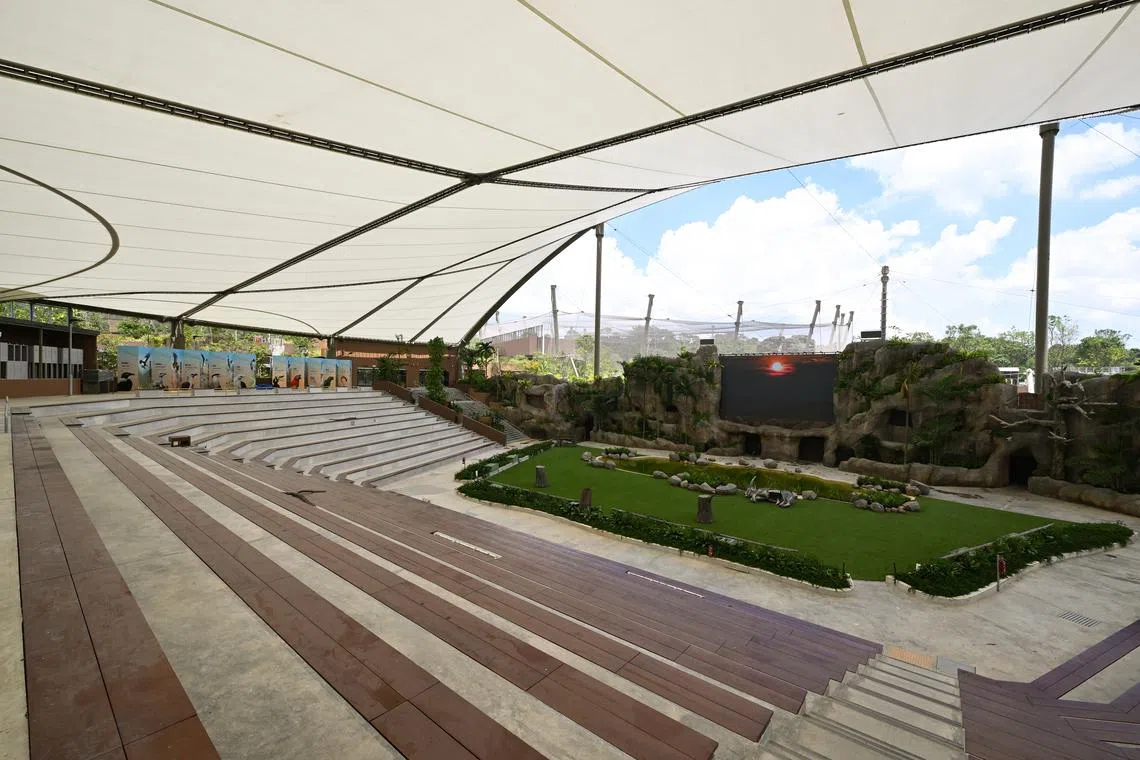
The new Sky Amphitheatre in Bird Paradise.
ST PHOTO: LIM YAOHUI
The Sky Amphitheatre will host two new animal programmes – Predators on Wings and Wings of the World. The amphitheatre has a digital screen that was not previously available at Jurong Bird Park’s show areas.
4. Food and beverage options

An artist’s impression of Food Central, a food court in Bird Paradise.
PHOTO: MANDAI WILDLIFE GROUP
There will be dining options both inside and outside the park.
Within Bird Paradise are seven F&B outlets, which range from casual eateries to themed dining restaurants.
The themed restaurants include Crimson Restaurant, which offers a bird’s-eye view of Hong Leong Foundation Crimson Wetlands, and where guests can enjoy food from a menu curated by local celebrity chef Eric Teo.

Crimson Restaurant offers a bird’s-eye view of Hong Leong Foundation Crimson Wetlands. Guests will enjoy food from a menu curated by local celebrity chef Eric Teo.
PHOTO: MANDAI WILDLIFE GROUP
In Penguin Cove Restaurant, guests can help themselves to a buffet spread featuring sustainably sourced seafood while watching penguins dive to a depth of 7m in two aquatic tanks.
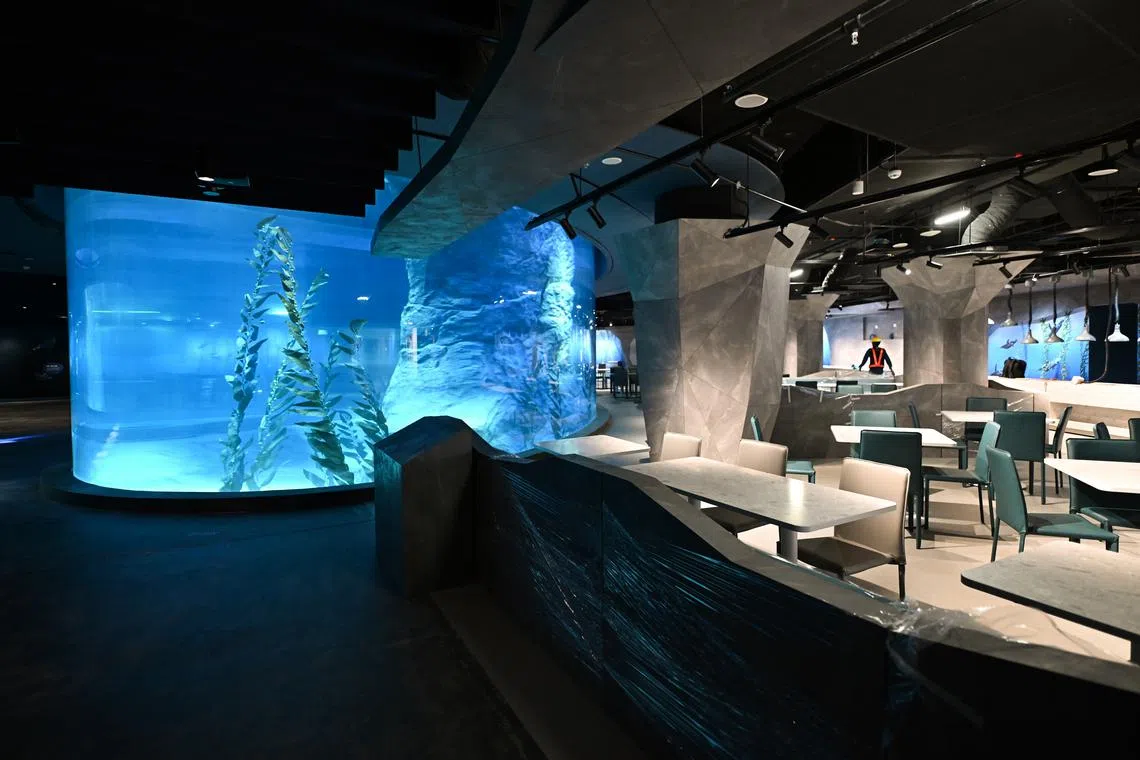
In Penguin Cove Restaurant, guests can help themselves to a buffet spread while watching penguins dive to a depth of 7m in two aquatic tanks.
ST PHOTO: LIM YAOHUI
There are also casual eateries such as Penguin Cove Cafe, Bird Bakery and Egg Splash Cafe, a tram kiosk and Food Central, a food court with a variety of cuisines.
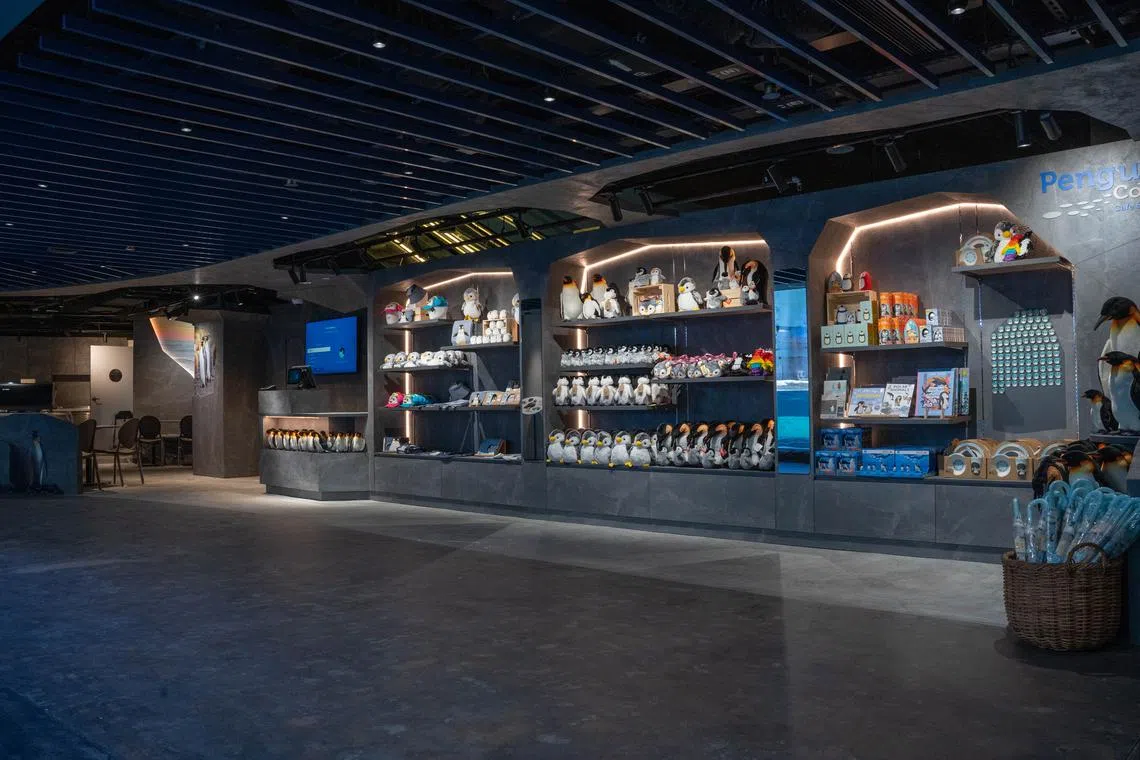
Casual eatery Penguin Cove Cafe.
PHOTO: MANDAI WILDLIFE GROUP
At Mandai Wildlife West – the public entrance node for Bird Paradise and the upcoming Rainforest Wild – options include Luke’s Lobster, Leckerbaer and Mr Holmes Bakehouse – housed together in a “flagship multi-concept store”.
Fast-food chain A&W, Western restaurant Collin’s, Han’s, Indian restaurant Pavilion Banana Leaf, Coffee House by Old Chang Kee, Starbucks, Cheers and ice-cream parlour Birds of Paradise are among the other options.
5. Play areas for children
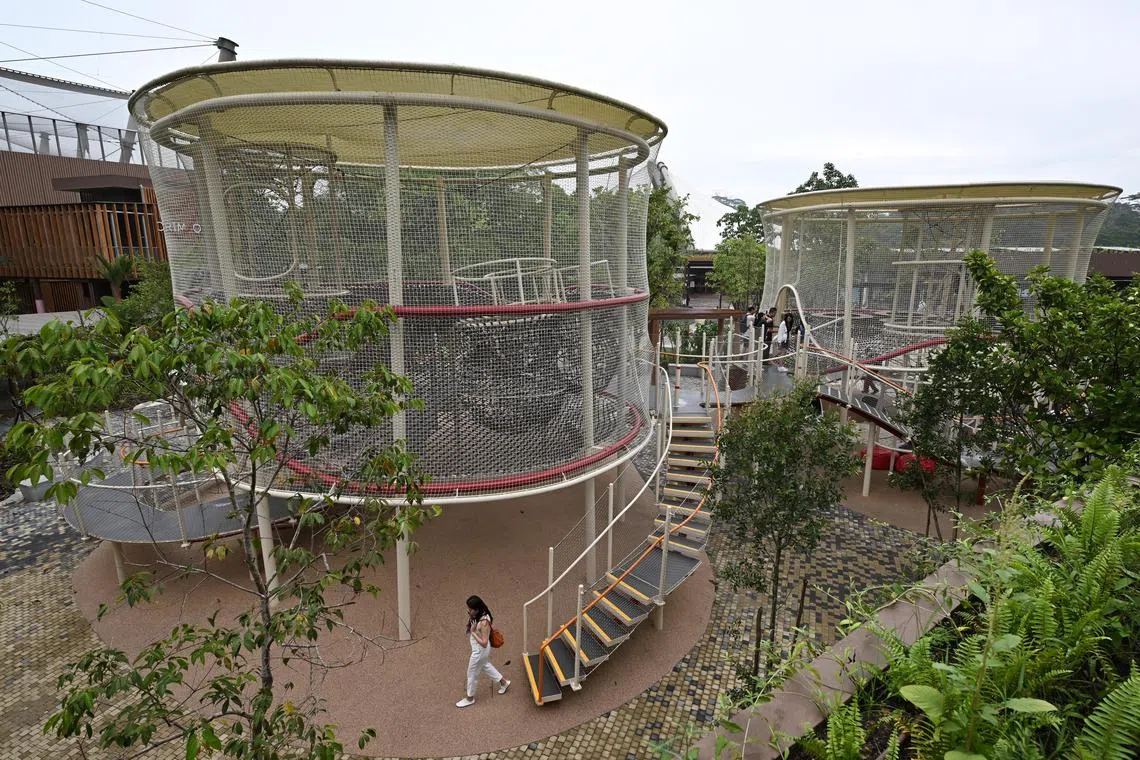
Treetop Play, a dry play area in Bird Paradise.
ST PHOTO: LIM YAOHUI
Within the park, Treetop Play, a dry play area, is inspired by the movement of birds, while Egg Splash is a wet play area with slides, sprays and shallow pools. At Mandai Wildlife West, two play areas – Pangolin Adventure and Pangolin Hideout – encourage children to climb, burrow and slide like pangolins.
6. New Mandai app
In conjunction with the opening of Bird Paradise on May 8, Mandai Wildlife Group will launch the Mandai App, a new mobile app.
On the app, visitors can buy tickets, plan itineraries and navigate the parks in Mandai Wildlife Reserve. Orders at Food Central can also be placed through the app.
7. Ticket prices
For visits from May 8 to 26, admission will cost $38 for an adult and $23 for a child aged three to 12, while seniors 60 years old and above will pay $20.
Visitors will pay the full price of $48 for an adult and $33 for a child from May 27, following a run-in period that allows the park to tweak operations if needed, as the birds continue to adjust to their new environment. The ticket price for seniors will remain at $20.
Ticket sales begin on April 24.
Mandai Wildlife Group group chief executive Mike Barclay said admission is priced at about the level of the Singapore Zoo due to the new park’s content and the investment put into developing it.
Acknowledging that memberships and Friends of Wildlife memberships could be quite costly for some families, Mr Barclay said the group works closely with social service agencies and schools to provide about 250,000 free or heavily discounted tickets for visits to its parks every year, adding that the group is hoping to grow this number.


